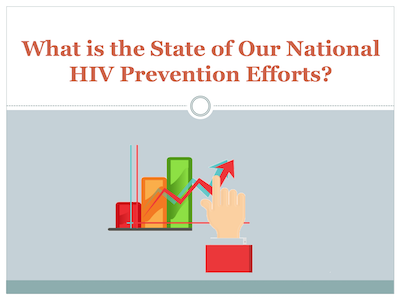Objectives for Module 2:
- Discuss what HEALTH INDICATORS are, what they are not, and why they are important
- Look at some of the current indicators and relevant research to see how well we’re doing with HIV prevention in key populations in the United States
- Identify current opportunities for advocacy to improve our current HIV prevention indicators
How well are we doing with our HIV prevention efforts?
Determining the answer to this question can be difficult, subjective, and inconsistent across communities. It can depend on which populations we’re discussing, which data we’re looking at as indicators of progress, and how the information behind those indicators is being collected and assessed. Being able to critically review local, state, and national indictors for HIV prevention, such as those housed within the National HIV/AIDS Strategy, is an invaluable skill for any policy advocate. Understanding how we are defining and determining success can better inform our policy advocacy agendas and help us speak up when we feel that the numbers are misleading or completely incorrect.
Module 2 introduces advocates to the world of health indicators and data advocacy. The slides, handout, and webinar below describe health indicators and review some of the data sources we might use to determine how well we are preventing HIV transmission across communities. We also provide helpful tips for understanding statistical and epidemiological data—including how to avoid some common mistakes and misconceptions while looking at all those charts and graphs.

